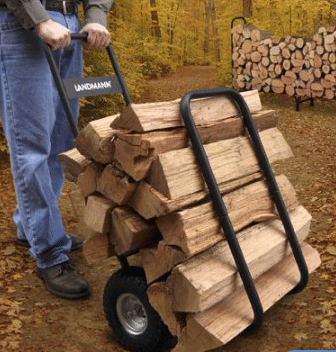Keeping a firepit clean isn't just about looks. It plays a big role in how well it performs and how long it lasts. After a cozy night by the fire, a little cleanup goes a long way. This means clearing out ashes from wood burners since they can lead to rust if left sitting too long. So, grab a small shovel or scoop and get rid of those ashes every time you use it.
For gas firepits, checking the burner is key. You want that flame to be even and steady, right? Making sure the burner itself is cleaned regularly helps with that. A simple wipe-down to remove soot or debris is usually all it takes.
Remote fires aren't fun and the rocks in your firepit can sometimes be the culprit. Keeping those rocks free from twigs or leaves ensures your fire stays where it belongs. A quick brush or shake out can do wonders.
It might seem like extra effort but these little cleaning habits make your firepit a welcoming spot all year round. Your guests will thank you and your firepit will keep burning bright!
Safe Cooking and Cleanup Tips for Firepit Enthusiasts

Cooking over a firepit adds a rustic charm to your gatherings, but it also means dealing with leftover food debris. Marshmallows and hot dogs are usual suspects, often leaving behind sticky messes that attract unwanted critters. After you're done cooking, make sure to give your firepit a good clean. A simple mix of warm water and dish soap usually does the trick.
When grilling over the firepit, cleanup doesn't have to be a hassle. A good scrub with a grill brush will remove food residue and grease, keeping your firepit fresh and ready for the next adventure.
Don't overlook the areas around your firepit too. Make sure to clear any food debris that might have fallen off during those sizzling sessions. This helps in keeping pests away and maintains a clean outdoor space.
Keep in mind, that maintaining good firepit hygiene isn't just about cleanup. Using the right tools for cooking, like long-handled forks or grilling accessories, adds safety to your experience and minimizes the mess you have to tidy up later.
Seasonal Maintenance: Prepping Your Firepit for Harsh Weather

Firepits are a fantastic way to enjoy the outdoors, but they need some TLC when seasons change, especially if they won't be used for a while. Transitioning them to storage mode can help keep them in top shape. Start by cleaning off any residue from the last use, preventing moisture buildup that invites rust.
Finding the right spot to store your firepit is crucial. Whether it's summer or winter, a dry place is a must to avoid dampness that could damage the materials. Think garages or sheds, but ensure adequate ventilation if it’s a closed space.
Investing in a good poly cover will pay off in the long run. It’ll guard against rain and sun damage, both of which can wear down your firepit over time. Choose a cover that fits well, giving full protection from top to bottom.
When storing propane tanks, keep them outdoors if possible. If they must be inside briefly, remove them from the firepit and ensure there's proper air circulation. Safety first—propane in closed spaces can be a big hazard.
A little planning when storing away your firepit for the season makes a big difference in keeping it ready and reliable for when you're eager to fire it up again.
Fuel Handling 101: Best Practices for a Safe Fire Experience
Choosing the right fuel for your firepit is more than just a techy detail. It could mean the difference between a roaring success and a smoky disaster. For wood-burning firepits, not all wood is equal. Hardwoods like oak or maple burn hotter and longer, providing a steady heat that's perfect for those cooler nights. Softwoods might just leave you frustrated, struggling to keep your flame alive.
Gas firepits have their own set of rules. Ensure you're using the correct type of gas suited to your burner setup. This isn't just about efficiency; it's also about safety. Different burners require different gas types—propane versus natural gas, for example—and using the wrong one can be a risky move.
Handling propane tanks requires attention too. When you're not planning to use your firepit for a while, make sure to disconnect the tank. This is a must-do if you're storing your firepit indoors. Keeping the tank outside, in a well-ventilated area, drastically reduces any risk of leaks or accidents.
Always keep a close eye on fuel storage areas, ensuring they’re free from flammable debris or materials that could ignite accidentally. Being proactive about fuel safety ensures every firepit gathering is enjoyable and worry-free.
Long-Term Care Strategies for Firepit Preservation
Keeping your firepit in prime condition for the long haul requires a few proactive steps. Conducting routine checks on hardware can catch small issues before they become big problems. Tighten loose screws and bolts and replace any worn-out parts to ensure everything is safe and sturdy.
Rust is a nemesis for many firepit owners, especially those with metal structures. A bit of DIY rust-proofing can be a game-changer. Look into using heat-resistant paint or a protective metal sealant to add an extra layer against the elements.
Have you ever considered going green with your firepit maintenance? Eco-friendly cleaning solutions are gentle on your firepit materials and the environment. They’re easy to whip up at home with ingredients like vinegar and baking soda, providing a natural alternative to harsh chemicals.
Don’t underestimate the benefits of investing in some basic maintenance tools. Things like steel brushes, covers, and specialized cleaners offer extra care for your firepit, making cleaning and preservation tasks a breeze. Your firepit will thank you with year after year of great service.


